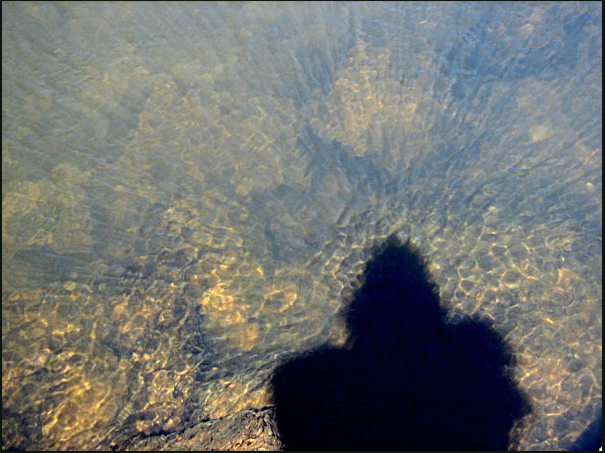Water Aureole
Water Aureole: An Intricate Play of Light on Water Surfaces
The captivating world of atmospheric optics never ceases to amaze us. One such mesmerizing phenomenon is the water aureole. As we gaze upon the ever-shifting surface of water, we are treated to a spectacle of optical effects that unfold before our eyes. Let's delve deeper into the intricacies of this enchanting phenomenon.
When ripples form on the surface of water, they act as lenses, directing converging cones of light downwards. However, when the water is slightly turbid, these lenses become visible in a rather unexpected manner. Despite the light cones being parallel to each other, perspective effects make them appear to radiate outward from the point directly opposite the sun, where the shadow of your head is cast.
As the focused light shines on the streambed, it creates a dynamic pattern of bright curves known as caustics. These caustics seem to dance and move, constantly shifting and transforming before our eyes. If you observe them closely, you may even catch glimpses of gem-like flashes of color as the water lenses re-image them.
The interplay of rays and perspective effects in the water aureole phenomenon gives rise to a mesmerizing display of light and shadow. Rays of sunlight, passing through the atmosphere and interacting with the water's surface, create a captivating tapestry of patterns and illusions. It is as if nature itself is painting an ever-changing masterpiece for us to marvel at.
To truly appreciate the intricate beauty of the water aureole, it is important to understand the underlying physics at play. The formation of caustics and the illusion of radiating light cones are a result of the refraction and reflection of light as it passes through the water and interacts with its surroundings. This complex interplay between light and water creates a visual spectacle that is both captivating and awe-inspiring.
As with many atmospheric optics phenomena, the water aureole is best observed in the right conditions. A slightly turbid body of water, such as a gently flowing stream or a tranquil pond, provides the ideal canvas for this intricate play of light. The presence of ripples on the water's surface enhances the visual effects, allowing us to witness the full glory of the water aureole phenomenon.
The water aureole serves as a reminder of the hidden wonders that lie within our natural world. It is a testament to the intricate and interconnected nature of the phenomena that surround us. By taking a moment to appreciate the beauty and complexity of the water aureole, we gain a deeper understanding of the marvels that can be found even in the simplest of natural occurrences.
In conclusion, the water aureole is a captivating atmospheric optics phenomenon that showcases the interplay between light, water, and perspective. As light passes through the ripples on the water's surface, it creates converging cones of light that appear to radiate outward. The resulting caustics and flashes of color add an extra layer of enchantment to this already mesmerizing display. So, next time you find yourself near a gently rippling body of water, take a moment to observe the intricate dance of light and shadow in the water aureole, and let yourself be captivated by nature's masterpiece.

Water Aureole
Imaged by Andrew Kirk on Easter Sunday 23rd March. ©Andrew Kirk, shown with permission.
The ever-shifting surface of water is full of optical effects.
Here, ripples on the water surface act as lenses to direct converging cones of light downwards. When water is slightly turbid they become visible but not as you might expect. The light cones are all parallel to each other but perspective effects make them appear to radiate outwards from the point directly opposite the sun where the shadow of your head is located.
Where the focused light shines on the streambed it forms a moving pattern of bright curves - caustics. Watch them carefully to see gem-like flashes of colour as the water lenses re-image them.
Rays and perspective effects

Note: this article has been automatically converted from the old site and may not appear as intended. You can find the original article here.
Reference Atmospheric Optics
If you use any of the definitions, information, or data presented on Atmospheric Optics, please copy the link or reference below to properly credit us as the reference source. Thank you!
-
<a href="https://atoptics.co.uk/blog/water-aureole/">Water Aureole</a>
-
"Water Aureole". Atmospheric Optics. Accessed on November 26, 2024. https://atoptics.co.uk/blog/water-aureole/.
-
"Water Aureole". Atmospheric Optics, https://atoptics.co.uk/blog/water-aureole/. Accessed 26 November, 2024
-
Water Aureole. Atmospheric Optics. Retrieved from https://atoptics.co.uk/blog/water-aureole/.